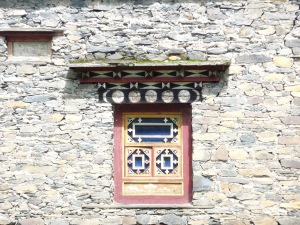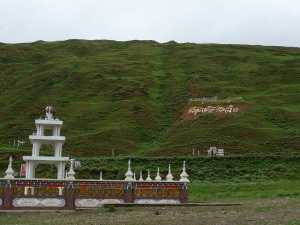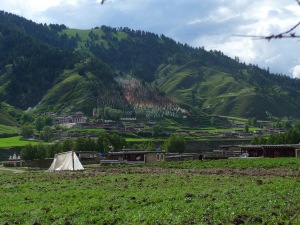Spies! Romance! Mystery! Yaks! It’s All Happening in The Dream of the Turquoise Bee!
Hi Everyone–
Announcing that the novel I’d been writing for eight years, The Dream of the Turquoise Bee, is out in paperback and all ebook channels (Kindle, Nook), so check it out. Over the years I’ve been in the Dharamsala refugee community and in Tibet, I’ve collected some touching, hilarious and tragic stories from my Tibetan friends and have woven them all into a story that has been reviewed as “a ripping tale of intrigue” and ” mesmerizing stories of life on the Tibetan Plateau all brought together in a novel that will both charm you and capture your attention from beginning to end.”
Order now at:
Barnes and Noble (Paperback and Nook)
ABOUT THE DREAM of the TURQUOISE BEE:
In 1959, renowned French photojournalist Girard Pelletier disappears in Tibet. His colleagues believe he was murdered, as it is known he was writing a book about the Chinese takeover of Tibet. Years later his wife, Erzebet, a botanical illustrator, accepts an official invitation to join an educational exchange in the same region where Girard disappeared. She believes she will solve the mystery of his disappearance. The scholarly mission is a ruse. Erzebet has been set up by the Chinese Government.
What appears to be a scholarly quest evolves into a twisting tale of the police, forbidden romance, dangerous adventures, and personal obsessions played out against the backdrop of the spectacular landscape, exotic people, wildlife and flowers of Tibet.
REVIEWS HAVE BEEN STRONG, SALES ARE MARCHING ALONG:
A rich and powerful novel that combines romance, mysticism, and politics in the mysterious world of Tibet. A thrilling and intelligent story unfolds as artist and botanist Erzebet Pelletier sets out to find wildflowers — and to discover what happened to her journalist husband who vanished years earlier as the Chinese moved into Tibet.
— Sasha Paulsen, Napa Valley Register
My greatest hope in writing this novel was that Tibetan themselves would think it captured the truth of their lives,:the struggle, the fun, and the connection to the West which has been enthralled by the Tibetan story for centuries. And, so it has:
“. . . the touching and gripping tale of Tibetans who escape over the mountains to India, pray for the return of His Holiness the Dalai Lama to Tibet, live under the brutal oppression of the Chinese government, and teach their children to love, herd animals and read—this describes my parents and their parents and their parents before them in Tibet. More than a great adventure story you cannot put down, this is an education about our culture–written by someone who has been on the inside learning and experiencing it for years.”
–Lobsang Tsering (Director of Tibetan Living Communities)
I wanted to tell the story and interlace it with my work in botanical illustration on the Plateau (I’ve got 58 paintings so far, with another 50 to go) , so that’s in there, too, as Erzebet Pelletier, a French botanical illustrator, travels to Tibet to solve the mystery of her husband’s disappearance.
Where did it happen? Here, at the nomad camp at Manigango in Kham, where nomads, horses, and yaks live on the shores of the sacred lake known for its celadon waters and stones carved with the Tibetan Buddhist prayer, Om Mani Padme Hung:

Yi-Lhun Latso Lake, the sacred lake near Manigango, the scene of the action in the Dream of the Turquoise Bee
And of course, what is Tibet and what is a botanical illustrator in Tibet without the stunning display of the the Tibetan Blue Poppy to drive the turquoise bee wild?

The stunning blue poppy with its fragile sapphire flowers and needle-sharp thorns–what a metaphor for love and mystery in Tibet. . .
Hope you love it and think of it as a great gift for friends and colleagues for the holidays and those reading vacations. 10% of the profits from all sales go to Tibetan support groups and projects world-wide, so while you kick back and dream of Tibet, you continue to give to our friends on the Plateau, too. The first set of profits will go to International Campaign for Tibet until January 15, 2013.
ONWARD!!
Letters from Tibet #5-Diamox Dreams
June 17, 2009
One of the things we love about Tibet is our addiction to Diamox, the medicine Barb and I are both taking to ward off altitude sickness (I actually first typed attitude sickness, which it may be helping with, too). One of Diamox’s great attributes is that it puts you in a deep sleep at night, and you are REM-MING all night long. For instance, I have dreamed that I was making love with Lapo Elkann (the 30 something heir to the Fiat fortune who wears the greatest suits and shoes), while at a going away party for my dear friend, Angelina Jolie. A few days later I dreamed that Angelina was wrapped up in a blanket, lying in a foetal position, and said to me, “I am your little squirrel.” Yes, I replied, with great affection,“You are my precious little squirrel.” I also dreamed that someone in my family had been through training to be a plastic surgeon, and they said I could have plastic surgery on my nose for free and it would be a great opportunity because the supervisor would also be there. I thought I would go ahead and do that, despite not really thinking I needed a nose job, but when I looked in the mirror, I saw that, indeed, I had a snout on the end of my nose that was just like a pig’s, so surgery was probably in order, after all.
Barb has dreamed that her left arm was a large wing made up of bright orange begonias, and her ex-boyfriend had a complementary wing of bright red begonias. She has also wandered with her grandmother for hours in a hotel looking for her grandmother’s room, and has been unable to culminate making love with somebody (she doesn’t know who—some cute guy) because she is in a room with eight doors and a plethora of people coming in and out serving coffee.
On our way to town one day, we are excited to see Khandro carrying two bags of garbage into Gansi. Yesterday, I had told her not to toss a biscuit wrapper in a field, and she looked at me with total amazement. Waste management hasn’t caught up with the Tibetans—rather like the US in the 1950’s when people would toss a garbage bag out the car window when they were out for a Sunday drive in the countryside. Big fines, recycling and trash pick up at your front door took care of most of that, but those are strategies that have yet to reach us on the Plateau. So, we are thrilled at the environmental breakthrough. As we chug toward Gansi in the taxi, she asks the driver to pull over to the side of the bridge, and lifts the two bags. I assume there is a trash site nearby, but she is about to toss it out the window into the rushing river.
Once again, she is totally taken aback by the screams of protest from Barb and I, and brings it back through the window to be deposited in a barrel in town, with a look of “Whaaaaaat’s the problem?” on her beautiful face.
We know that many of the people on the tours this summer are bringing clothing for the kids in the village. So, one I ask Khandro for a list of all the children in the village so that when the tour guests come, we can distribute those fairly and also buy clothes and toys for the kids in town. Great jackets and dresses abound (being China, everything is a rip off from some manufacturer who sells in the West—you can buy a North Fac jacket that looks like a real North Face or an Ozark Jacket that has a label saying Zarko). They’re a little short on the spelling. On the screen saver at the internet place, it says TES TO LIFE and NO TO DRUGS). Khandro sits down with me after dinner and in one fell swoop rattles off the names of 92 kids and their ages, from 1-18.
I am asleep when she and Nyima Dakpa come in to shake me and wake me up—they are concerned because she has forgotten 6 more kids that live at the edge of the village, so their names go on the list, too. I try to imagine remembering 98 kids’ names and ages, without a falter before I drift back to Diamox Land.
Today we go to town with Nyima Dakpa to buy a small two-burner gas stove for the tour camp site, since we have realized that hauling tons of dried yak dung with us will not work and my plan to have one of the silver paneled solar cookers is dashed when Khandro looks at me with skepticism and has me lift it to see how much it weighs–probably 150 lbs, not so easily hauled along with all the rest of our stuff (I probably could have gotten away without buying microscopes, but I did think the tour guests might want to look at bugs and leaves in Tibet)
Khandro is thrilled about the gas stove, but also scared as it keeps lighting up with a flare. She asks how Americans cook. Do they use an open yak dung fire? Do they use gas? When I tell her many people in the United States have electric stoves, I have to draw her a picture to get the idea across. She keeps looking up at the light and saying luk? (electricity). For someone who lost part of a finger and has 4” round scars all over her body from being electrocuted as a child–unconscious for five days–when she touched a live wire hanging out of a socket, she’s understandably a bit gun shy. By the puzzled look on her face, I can see that I never do bridge the concept between electricity and cooking.
Later on, Khandro shows us who’s boss and gets back at our know-it-all selves by wrestling with us, something that Tibetans love to do—I’ve been in many a wrestling scuffle, trying to hold my own with people who work in fields all day and run up and down the mountainsides—it isn’t easy trying to take down a Tibetan on their home turf, but we give it a go.
In the afternoon, we do the usual and go out to the path in front of the house to wait for our yaks to come home from the hills. Everybody else is out there, too, because that’s what happens at 7:00pm, 365 days a year in Oh Szang Village.

Yaks Coming Home After a Happy Day in the Mountains (Note Our Wonderful Yak on the Right—the One with the Superior Set of Horns and the Ring in the Nose)
Above: Last of the Yaks Come Home from the Mountains
We open the gate to the courtyard of the home and wander in with our yaks–they don’t need us, they head straight to their stalls under the house. In the courtyard, Khandro starts playing around with her kids, chasing and wrestling with them and pretending to be the Chinese police beating them with truncheons.
Her 14 year old son, Thamdin, laughs and marches around the yard, imitating the rigid form and goose-step of the police and military we have seen in town. It is disconcerting for Barb and I who are on the sidelines, but just part of getting through life for them. What doesn’t kill you makes you stronger comes to mind as a maxim that seems to have daily use in Tibet Land.
The new stove means that money will be spent on propane gas and Khandro released from a lifetime of hauling dried yak dung and kindling up the stairs on her back before she goes out to herd the yaks, work in the fields all day long or sweep and clean the mud floors of the house. It’s a trade off. After the first 10 days the small tank of gas runs out and Khandro finds out it has cost 75 cents a day to feed our group of 8 people and she almost puts it back in the box to be returned. I tell her we will use it during the tour and she can shelve it afterwards, until next year when we come back again. I can see this is what she will decide to do. It’s a luxury, and with her new salary from the tours, she will have to decide if it is one she wants to take on.
As we continue to strategize the feeding scenarios for the tours, Khandro says we don’t need to buy new pots and pans—we can use the ones her family has used for at least a few generations. Indeed, they look great, aluminum shining against the 20 foot high dark mud walls of the kitchen. All sizes—they look like hordes of people have been served out of these pots—and they have.
Breaking News on the 2010 Tours to Tibet–Ron Zak, Professional Photographer on Board
I have more Letters from Tibet to post from last summer’s tours, but wanted to break that series to let those of you who have asked about our plans for next summer in Tibet in on some great news. We have decided to do two tours in summer, 2010 and here are the details.
Tour #1 (June 19-July 5) will focus on Botanical Illustration, but as usual, everyone who wants the true Tibet experience and isn’t so inclined to learn to sketch and paint is invited along, too. Last summer we had a guest who was completing her 2 year Botanical Illustration Certificate Course and focusing on orchids and poppies of Tibet for her final project and other guests who had never picked up a paint brush before.
I will teach a botanical illustration class in sketching and painting almost every day. Ever wonder how in the world illustrators get leaves to look so realistic–you’ll be doing it in record time! Can’t imagine how you’ll ever be able to ix the colors so that it is true to the plant in front of your eyes? Never fear–that’s what you’ll be learning. We’ll focus on field work, choosing plants we love to look at or those that are strange and mysterious, even dissecting to see the floral reproductive parts (we have microscopes for those who want to get down to a cellular level). While some guests paint, others will be napping in the sun, hanging out with villagers, and who knows what else. The big activities (horseback riding at the glacier lake, spending the night at the restored nunnery, visiting the monasteries, shopping for silver knives with turquoise and coral encrusted handles, soaking in hot springs, and herding yaks) will be part of the painter’s journey, too.
Tour #2 (July 9-July 26) will focus on Photography. People kept asking if we would do a tour with this focus. After all, who is more photogenic than the Tibetans and surely the fantastic landscape on the Tibetan Plateau competes with any locale in the world? We went looking for someone who was not only a top-notch photographer in their own right, but someone who knew how to guide others in foreign lands. We are thrilled because we have just heard from Ron Zak, photography instructor at Napa Valley College (Napa, California), who has led photography trips to such challenging and incredible places as India, Thailand, China, Cuba, Greece, and Vietnam. Ron will give daily instruction and critiques while we visit villages, monastic centers, herd those yaks, go to festivals and meet nomads in the hills and streets of the local towns.
Visit his website at http://www.zakworld.com to read more about him and see what he’s up to these days. And better yet, imagine what it will be like to be traveling in Tibet under the guidance of an adventurer and pro like Ron.
The 2010 Dream of the Turquoise Bee link at www.dianneaigaki.com
The website for the 2010 tours isn’t finished yet, but the itinerary for both tours will be very close to the journey we followed in 2009, so take a look and see if you or someone you know will be joining us in Tibet in Summer, 2010.
Letters from Tibet #2- I Take Some of It Back
May 25-June 1, 2009
Okay, I take a lot of it back. After that last letter, we arranged for the expensive truck, went out for spaghetti and meat balls again to get ourselves ready, came back to the hotel at 10:00pm to find Uncle Wangyal sitting in the lobby waiting for us. He had come in from 1.5 hours away out in the country for the second time that day, and said he had a truck. A young woman with a very beautiful face and abrasive voice got on her cell phone and starting yelling at God knows who, Jason (English nom de plume of our handsome hotel manager who I have a crush on) translated between Chinese and English, and after only 2 hours of yelling and the Tibetans’ phone ringing every two minutes (Jason: “My God, they’re busier than I am and I run a 145 room hotel!” Me: “They must be drug dealers–that’s the only explanation.”), it was decided that we would leave at 6:30 am with the new/old truck with a Chinese driver who was a friend of some one or other and spoke no English. During all of this fol-de-rol, the Tibetan dance troupe arrived back in full costume from a successful performance at the Intangible Culture Festival and ran exuberantly around the lobby leaping and singing Tibetan opera and punching each other in the arms.
We left Chengdu at 6:30am on schedule and drove for 40 hours (usually takes 18 hours). We had to buck road construction for hours, a blinding snowstorm coming over a 16,000 foot pass, and a driving rainstorm with rain coming at us like crystal swizzle sticks.
The driver kept talking to us in Chinese and looking at road signs, asking me where to go. I had no idea, as I don’t read Chinese and couldn’t remember the way to Gansi–all yak herds were looking the same.
The fun nature of the trip was added to by a leak of freezing water coming in through the roof of the cab-right over Barb’s head. Being Barb, she gamely just wadded up a plastic bag and balanced it on her hair to ward off a potentially severe head cold.
Finally we crossed the last high pass (Gye La Pass–4,290 m/14,075 ft) and descended into the fabulous Tagong grasslands (a bit snow-covered for our arrival, but grasslands none the same). We pulled into our hotel about 10:00pm, falling out of the cab and into the hugs of the hotel’s owner. I’ve been through here before and they are always a warm, inviting group, chattering away. They showed us our rooms, and ran to the kitchen to start preparing a meal of thukpa (vegetable soup), rice, yak meat, potatoes–enough for a hungry party of forty, although we were the only guests.
Early morning, we were on the road again, the potholes and mud slides hardly fazing us. In the fields were decorated ponies and people with red yard woven in their hair, topped off with big amber and ivory headdresses and huge chunks of turquoise hanging from their ears. Snow covered the fields and the yaks in the meadows who also sported red yarn in their tails. We passed the beautiful homes made of native stone–they have a crisp rich feel–and indeed the Tagong grasslands are known for their fertile fields and fine architecture.
The Tibetan Plateau is known for its highly decorated windows and doors on stores, hotels, homes and monastic centers–designs include mountains, animals like the snow lion, flowers, leaves and the Eight Auspicious Symbols of Tibetan Buddhism.
The snow gradually disappeared and the roads improved a slight bit, cheering us up immensely. There is nothing that makes your heart skip and speaks more to being in Tibet than rounding a bend in the road and seeing Om Mani Padme Hung (often spelled and pronounced by Westerners as Hum)–the Tibetan prayer to end suffering for all sentient beings painted on the hillside high above a village.
. . . or driving by a village and seeing prayer flags stretching up the mountainsides, fluttering in the wind, sending out these same prayers of compassion out into the universe.
The weather began to clear before Tagong, where we stopped briefly at Lha-Khang Monastery, one of those shining examples that the Chinese Government has on display to show that all is well in the land of Tibetan Buddhism. I could be wrong about the public relations motivation on this one, but I have been there many times and have never seen more than a few monks on the grounds, and never heard or seen a ritual in progress.
Hours later (9:00pm), after more hours of insanely inefficient 10km/hour road construction, we crossed the final pass that signaled we were almost in Gansi. It was just in time–we were all ready to crack.
In the village of Oh Szang, a short drive beyond Gansi, we were greeted with tears and hugs by the villagers, and within minutes a fight with the driver had ensued because I had agreed to pay him more for the trials and tribulations of the trip and they thought I shouldn’t and insisted I not, hustling me into the house (We’ll take care of this!!”).
Jason had been calling all day from Chengdu to track our progress (world’s most nurturing hotel manager) and got on the phone and talked to everyone while the driver and the villagers yelled. Finally, I had Jason tell the driver I would give him the agreed upon fare in front of everyone, he should accept it graciously, and I would slip the remaining $130 “tip” under his seat in the truck. This came down with no further problems–we all went in the mud house to eat momos (including the driver), and be force fed with cookies and tea, and slept a sound sleep after being tucked in by Lhamo Choedon, my friend Ricnhen’s sister, and a woman who has become a friend like family over the last years.
Today we put one of the fab tents up and Uncle Soega went off to town to negotiate for tent poles, spikes and other accessories.
ONWARD!!
Letters from Tibet #1: Good God What Hath We Wrought?
The Dream of the Turquoise Bee Tour to Tibet
Greetings from the other side of the world. I really miss you-please come and save me from myself. For those of you who don’t know what is happening, I am in China and Tibet completing the final legwork and heavy-lifting for the Dream of the Turquoise Bee Tours to Tibet this summer. Please join me, vicariously, on this rather wild journey, which is an eco-tourism partnership with Tibetan villagers.
Let me start by saying you would not believe how close to the edge of insanity I am. It took days to get the 12 Tibetan tents in our own hands–because the tent guy who made them didn’t think Barbara and I were strong enough to put them up and he didn’t have enough people to help (how many damn people could it take? and he said they were too heavy for us –being girls and all–to lift, etc., etc.) Turns out the tents weigh about 40 lbs or less–a one-handed lift from my world. Anyway, that was exasperating, threw off the whole schedule by days and now we can’t find a truck to take everything to Gansi (last offer was a bus for $1,200 for the 18 hour trip, which as I watch the money drain out of my pocket seems like a bad move). Also had a 3 day holiday thrown in for good measure, which was explained to me as an idea the Chinese Government came up with to help people relax because everyone is so nervous about the economy. Before that we had two vehicles lined up that both cancelled (hours of torturous conversations went into lining them up).
I was awake at midnight last night mulling over my life while doing Sudoku, so went to town to a bar along the river. When I’d passed this bar earlier, I ‘d seen there were some English speaking people hanging out. Dave, the Chinese owner (I assume Dave is his own recent nom de plume) was there when I arrived and after hearing about our dilemma, he said he would drive us and the stuff in his own 4 wheel drive for $450 and we would leave this morning at 6:00am. I came back to the hotel, reshuffled all of the piles (food of every culinary origin, camping chairs, pots and pans, pillows, blankets, clothes, books, etc–you can imagine how much stuff we have packed in the hotel room-the hotel staff think we’re nuts as we have unloaded taxi after taxi of boxes to be carried up to the room), repacked the tents and went to sleep. By 3:00am Dave was calling to say that he had telephones his friend who is a policeman in Gansi (where we are going) and the friend said the area is still closed to foreigners and we would not be able to get in. He could go, but not us. That took care of that solution, as us getting there is at least as important as our belongings arriving.
An alternative is Choegyal who speaks perfect English and could be very helpful, but has a few character/family lineage defects, one being he is the nephew of a lama who is a spy. I wrote to my friend Rinchen to see if I could rely on him–get “permission” so to speak to have him negotiate for trucks. Haven’t heard from Rinchen. Then I had Choegyal call Rinchen’s uncle to see if Rinchen’s family can help with the truck, and got a call back (imagine this all coming down in Tibetan over the phone) with great concern about me talking to the Chinese spy family.
Today I opened an account at Bank of China, so at some point will be able to just start using that. I imagined it would be a nightmare to open an account in China without a permanent address, etc. It took all of five minutes to get a credit card linked to the account, an ATM card and a passbook. That was a bright idea, as we were carrying around tens of thousands of dollars in cash which we will need in Tibet–if we ever get there, of course.
The strain of it all has been broken periodically by foot massages, head massages and 100 wild Tibetans arriving at the hotel to stay while they participate in the Chengdu Intangible Cultural Arts Festival. They practiced dancing–leaping and twirling in the parking lot while the drum beat on. They were suitably attired in lion, tiger, and bull costumes head gear.
This is a good look with jeans, t-shirts and monks’ robes, since it was just a rehearsal–and that was a lift.

- Tibetan Dance Troupe Practices for the Intangible Culture Festival
Later I had spaghetti with meat balls at Peter’s Tex-Mex Resturant that also had great carrot cake, so that was a boost. You can tell we are grasping at straws to lift our roller-coaster moods. When I look in the mirror my face has taken on a look of apparently permanent dismay
Anyway, now we are off to talk to travel agencies again to see if someone can confirm that Gansi is open–which everyone has said it is–but we need another round of confirmation before we hit the road–not that we know what vehicle we would be using to hit the road. The Tibetans in Kham have told us they have seen foreigners in the streets, but we don’t know if this is true or who those foreigners might be. As Dave the bar guy says, “It doesn’t really matter what the tour agencies say, my friend the policeman knows what the policy is and foreigners are not allowed in.”
At 2:00pm, we go back to the hotel to meet with another trucking company–with a translator, of course, since the potential tuck driver only speaks Chinese. This brilliant connection to the new trucking company happened because I decided we should buy tickets to the Intangible Cultural Festival (everything else being rather intangible, we would fit right in with the Intangible Culture events) and the first thing out of my mouth when we started to discuss the tickets was to ask the hotel manager/ticket guy if he knew of anyone with a truck that would drive to Gansi. Turned out to be a good question, as maybe he does. Hence our meeting in a few minutes.
More later–I hope. We may go to nap in the WenShu Park which is 4,000 years old, but is mostly known in my book for the place where I once paid someone to stick long, thin metal feathery things into my ears and twirl them for a scary ear cleaning, while I drank green tea.
Love, Di
PS-As we travel along on our journeys into Tibet, we are mindful of the privacy of our hosts. Living in Chinese-Occupied Tibet, their security is complicated and fragile, and naturally we will do nothing to compromise that. For that reason, we won’t be using their actual names–you will come to know and love the nomads, villagers, and the regions they inhabit through their pseudonyms.

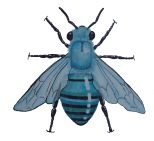







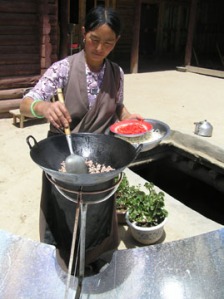




![newzak[1]](https://dianneaigaki.files.wordpress.com/2009/11/newzak1.jpg?w=300&h=203)






